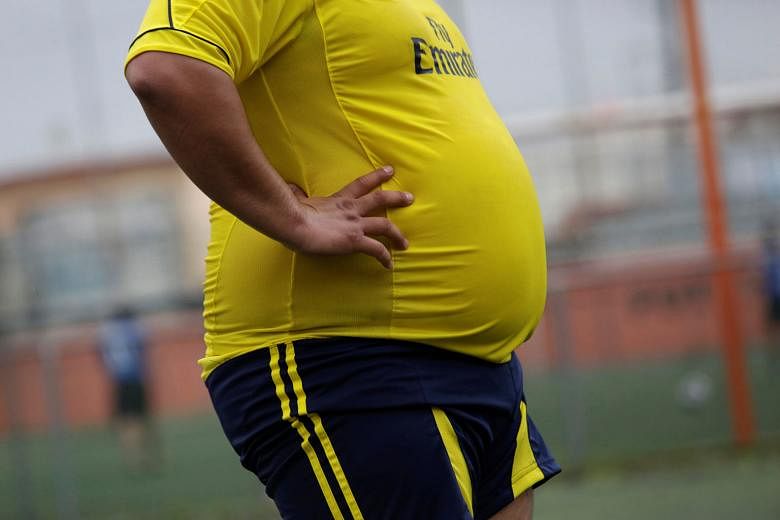Q Do I carry a dangerous amount of belly fat?
A Visceral fat is fat that collects around the abdomen - giving a "beach ball" look in some cases - and is associated with a host of medical problems, including heart disease, diabetes, heartburn and sleep difficulties.
No one knows precisely when fat becomes dangerous, said Dr Noyan Gokce, a staff cardiologist at the Boston University School of Medicine, who has a United States federal grant to investigate the differences between "healthy" and "unhealthy" fat. But fat seems to behave differently when pushed close to organs such as the kidney, liver and pancreas, he said.
Most of the health problems we associate with fat are strongly linked with visceral fat, which in many people seems to accumulate with age, said Dr Michael Jensen, a professor of medicine at the Mayo Clinic in Rochester, Minnesota, and a past president of the Obesity Society, a professional group.
Although everyone carries some visceral fat, gaining excessive amounts seems to happen only if there is a dysfunction, often tied to age, in the storage of normal or "subcutaneous" fat, he said.
There are several possible theories for this, including that the body simply runs out of the ability to make new healthy subcutaneous fat cells to replace old, dying ones; or that weight gained quickly overwhelms the body's ability to store healthy fat, he said.
There may also be an inflammatory process within subcutaneous fat that causes the dysfunction.
Mouse studies suggest that in women, hormone changes during menopause may also play a role.
Genetics plays a major role in how much visceral fat you will get as you gain weight, said Dr Caroline Apovian, director of the Nutrition and Weight Management Centre at Boston Medical Centre.
The good news is that visceral fat does come off - perhaps even preferentially - with weight loss.
Although the definitive test for visceral fat is a CT or other specialised scan, a waist circumference of more than 89cm in women and more than 102cm in men indicates an unhealthy amount of visceral fat, said Dr Apovian, an obesity medicine specialist at the Boston University School of Medicine.
Interestingly, in one 2010 study in which researchers removed visceral fat with surgery, there was no improvement in the test subject's health, Dr Apovian said. The findings suggest that the only useful way of losing visceral fat is through diet and exercise. "I can't explain that fully," she said.
NYTIMES

